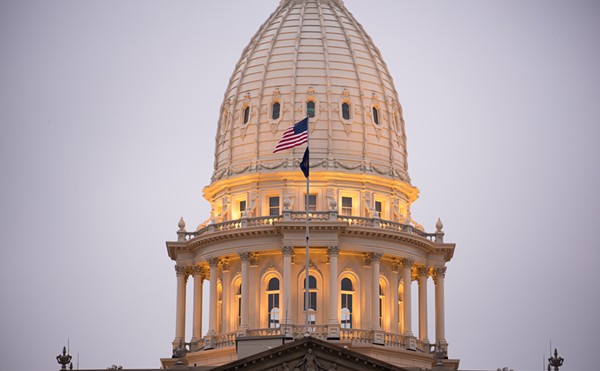PFAS chemicals are present in metro Detroit’s drinking water — in some cases at levels that potentially meet or exceed new federal drinking water guidelines. Costs to clean it up could be substantial.
A Planet Detroit analysis of state and federal survey data revealed detectable levels of the contaminants in 59 areas in southeast Michigan: 18 in Livingston, 23 in Oakland County, four in Macomb County, eight in Wayne County, and six in Washtenaw County. These areas included municipal and community water supplies, child care providers, schools, health care offices, and workplaces.
Most metro Detroiters — about 3.9 million customers across 126 municipalities — get their drinking water from the Great Lakes Water Authority. Cheryl Porter, GLWA chief operating officer of water and field services, says the agency has been testing for PFAS annually since 2009 and has not detected the substance in treated drinking water samples.
“PFAS… is not detected in our drinking water and consistently below the reportable limit in the source (raw) water,” Porter says in a statement. “GLWA does not have to take specific actions to remove PFAS.”
Planet Detroit analyzed state data and found at least three raw, or untreated, samples with detectable PFAS in untreated GLWA source water.
A GLWA spokesperson told Planet Detroit that the state’s samples taken in source or raw water were “research project samples” and not relevant to compliance.
State monitoring has detected PFAS in public drinking water supplies in the region, notably in Ann Arbor, which spends an average of $250,000 annually to remove PFAS from water it draws from the Huron River. The compounds remain in the Huron River source water.
The EPA also found the unregulated PFAS compound PFBA and the state-regulated compound PFHxA in samples from Oak Park, Birmingham, and Pontiac in 2023, ranging between 5.1 and 8.2 ppb. Michigan has no standard for PFBA. Minnesota has designated a guidance value of 7 ppb in drinking water.
“The PFAS family of compounds comes up as ‘non-detect’ in GLWA’s drinking water,” Porter tells Planet Detroit. “However, some of our member partners are reporting positive results in their systems.
“Given the complicated nature of this testing and the importance of accuracy in water quality, we’ll contact member partners to review the results and help them ensure that both testing and methodology are correct for the sampling they are completing.”
Thousands of metro Detroiters, meanwhile, get their drinking water from private wells or municipal water supplies that use groundwater wells. They may also consume drinking water from public water supplies that use wells at work, school, or healthcare facilities.
More than 165,000 of these wells are in Oakland, Wayne, Macomb, Washtenaw, and Livingston counties. According to EGLE spokesperson Scott Dean, people with private wells should test their water to determine whether it contains PFAS/PFOS contaminants.
“If PFAS above the standards is found during well testing, we recommend filters or alternative water sources for the home — working with the state and local health departments,” Dean says.
The water we drink is one of the most important potential routes of PFAS exposure. Michigan developed its own standards for PFAS in drinking water in 2020 under the authority of the Safe Drinking Water Act.
In April, the U.S. Environmental Protection Agency proposed federal standards under the same law that are different and, in some cases, more restrictive than Michigan’s standards. The agency will start enforcing them in 2029.
EPA also set a non-enforceable health-based limit of 0 ppt for PFOA and PFOS. One industry estimate projects that removing PFAS from drinking water nationwide will cost tens of billions of dollars.
The analysis further reveals that 15 public water systems, including municipal water systems in Mount Clemens, Independence Township, and Wyandotte, matched or exceeded the new federal standards.
Dean notes that one sample does not mean a violation. To be considered in violation, samples must total a running annual average that exceeds the maximum contaminant level (MCL). He adds that there are no current exceedances in metro Detroit.
Two supplies have had individual detections above the corresponding MCL value but have not yet had a running annual average above the MCL, according to Dean. These include Crossroads for Youth in Oxford and the FCA Chelsea proving grounds in Chelsea.
“EGLE needs to evaluate what [the new federal requirements] means in terms of public water supply requirements, in relation to sampling, testing, and future treatment if necessary,” EGLE spokesperson Scott Dean says via email. “Also, while not regulated, similar guidance is needed for residents on private drinking water wells.”









